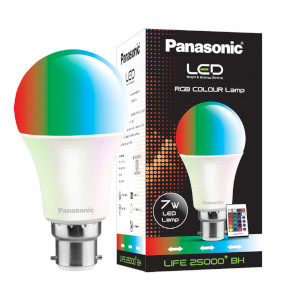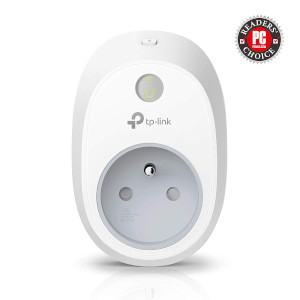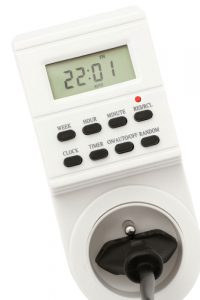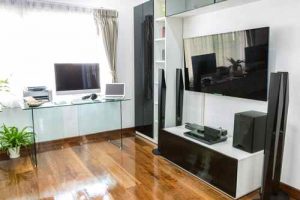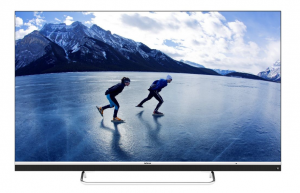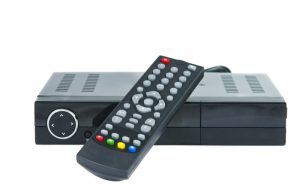SMART Appliances Market in India in 2024 - Review
Ever wondered if all the gizmos, gadgets and appliances you use could connect to the internet? Not mobiles and phones alone—but everything—lights, fans, air conditioners, speakers, camera, doorbells, and more. And if you control these devices at the tap of a button, or perhaps by giving voice commands? The idea sounds sophisticated and futuristic. But it’s no more a plot of science fiction. It’s becoming a reality—thanks to the advancement of science and technology. And yes, there is a name for technology which is making it possible. It’s called Internet-of-Things (IoT). A key application of IoT technology is in home automation—the science of making our home smart. Through home automation, you can automate and control items in the home by using an app or smart speakers like Amazon Echo or Google Home.
During our engineering studies, we used to be gung-ho about ‘smart’ appliances changing our future lifestyle. Fast forward to the present and adoption of smart devices like smartphones, smart bands, and smart TVs is self-evident. But besides them, there several other types of smart devices and items available in the market that would make our life easy, allowing us to control them with smart speakers, just by instructing them, or using a dedicated app designed for it.
So, let’s look into these smart devices and appliances available in the market which can save your time and energy which you can rather use for more productive work.
Smart Bulbs and Lights
Bulbs are one of the home appliances which have evolved so much over the course of time: from incandescent to halogen, from halogen to CFL, from CFL to LEDs. Enter 2020 and these LEDs are rapidly becoming smarter. You no longer need to traipse towards the switchboard to turn it on (or off). You can do that now with the app or smart hub like Amazon Echo or Google Home. Not only control with app and assistant, you can also tinker with brightness and colour of LED bulbs. So, let us look at the various smart bulbs offered by the companies in the market and the smart features they come with.
Let’s start with Panasonic. Panasonic doesn’t really make a smart bulb but rather a remote-controlled bulb. This bulb offers similar convenience of wireless control. And since it has dedicated remote, this product is more appropriate for old age family members. Panasonic bulbs work with regular B22 sockets and do not need any configuration hassles. Really suited for people who aren’t much tech-savvy. Remote allows choosing between colors like white, yellow, red, green, blue etc. Through remote, you can also change brightness levels. But note that remote works within a distance of 10 feet approximately. So, if you have a bigger room you might find it difficult to control from far off corners.
Companies like TP-Link, Wipro, Syska, Mi, Philips are offering bulbs that are truly smart. They have a dedicated app for controlling the bulb and alternately can be controlled from popular virtual assistants and smart speakers. TP-Link does not come with multiple color customization option in its smart bulb offering like Panasonic. Smart bulbs by Wipro and Syska have a similar app interface for control. They both allow remote color customization using the app and facilitates scheduling. Like if you want the bulb to be turned on Sundays automatically at 7:00 pm and closed at 10:00 pm, you can set a schedule for this action. Wipro smart bulbs require an active internet connection for controlling bulbs whereas Syska can work without the internet. Wipro is presently the only manufacturer amongst the established brands that offer smart tube lights too. Wipro Next 20 watts smart LED batten can be remotely controlled by dedicated Wipro Next app and works with popular voice assistants.
Philips offers even more advanced features than the contemporaries. Besides the usual integration with Google, Amazon, Apple, IFTTT and dedicated app control, it also has a couple of additional cool features. Like you can set an alert reminder in Philips Hue and it will blink at that time to alert you. Another useful feature is that it can turn on slowly in the morning—emulating the natural sunlight progression—which helps to wake you up in a more subtle manner than with regular alarms. Modern Philips Hue bulbs also allow you to mimic the disco feel at home by syncing with the song you cast. It flickers and changes the light based on the streamed song’s music and flow replicating the feel of disco.
Smart Fans
Enter 2020 and even fans are increasingly getting smart. Traditionally, ceiling fans use an induction motor for its operation. But a new revolutionary technology called BLDC (brushless direct current) motor is making it possible to significantly reduce energy consumption. BLDC fans also eliminate the need to install a separate regulator to control fan speed. Instead, they are controlled by wireless remote. Atomberg, Versa Drives, Jupiter, Orient, Crompton, and Panasonic are some popular fan brands which offer BLDC fans.
Atomberg Technologies have integrated their new line of Renessa Smart+ BLDC fans with Amazon Alexa, Google assistant, and IFTTT. This means if you have smart speakers like Amazon Echo at your home you can control it using voice commands. You can also use Google assistant from your Android phone for this purpose. For the uninitiated, using voice command to operate smart fans would be by adding/pairing smart fan with Google Home app or adding Alexa skill on Amazon Alexa app. You’ll be able to see the name of the device (which can be changed later) and then use that name to give voice commands. Like for example after adding Atomberg skill on Alexa speakers you can say something like “Hey Alexa, turn off the bedroom fan”. You can refer to the user manual for more information on using Renessa Smart+ fans with a voice assistant. Atomberg has also developed a dedicated app for Renessa Smart+ model so you can control fan speeds, switch between modes and set timer from the app itself. Renessa Smart+ models also come with a separate wireless remote which would be more helpful for the elderly in the house.
Besides smart BLDC fans, Orient Electric and Ottomate are making smart ceiling fans but they work on conventional induction motors. Orient Electric’s Aeroslim model is IoT enabled ceiling fan primarily targeted for elite customers who don’t mind spending thousands of rupees on a premium fan. It comes in a luxurious cylindrical design with LED light in the middle, and aerodynamic blade. It can be voice-controlled using Google assistant and Amazon Alexa. Like Renessa Smart+ it also has a dedicated app that can be downloaded from Google Play Store or Apple App Store. Using the app, you can set the fan speed, select different airflow modes, and even schedule the fan to turn on and off for a specific interval. Another good thing is that you can also adjust the brightness of the attached LED using the app. This premium Orient smart fan also comes with external remote useful for veterans in the family.
Ottomate is the first brand to offer smart fan which can be controlled by an app using Bluetooth technology. Ottomate smart fans work on conventional motor and not energy efficient BLDC ones. Hence energy consumption of Ottomate smart fans is on the higher side. But they are cheaper than Orient IoT fans. The best part about Ottomate smart ceiling fans is they come with free professional installation (though you can also opt to install the fan by yourself). They have one of the most professional ceiling fan installation staff who come to your come with all the necessary hardware including an adjustable ladder.
Talking about the features, Smart series Ottomate fans can be controlled by wireless remote or a dedicated app. Ottomate fan app is one of the smoothest fan apps around and there are 3 interesting modes of operation. First is the Otto mode where fans according to the temperature and humidity adjust the fan speed. So, in a way when the temperature is high and air circulation is dry, it would run to the maximum. Similarly, when the temperature is low it would run at a lower speed. Ottomate fans use specialize temperature and humidity sensors for this operation. The second mode is the breeze mode wherein fan intermittently changes fan speed to emulate the feeling of the sea breeze at your home. And finally, there is Turbo mode which makes the fan work with the maximum RPM speed—useful when you want a quick burst of air after a gruelling workout.
Smart Air Conditioners
If a fan is getting smart why shouldn’t be the big brother—the AC—fall behind? In fact, there is a greater need for ACs to be smart as they are the biggest energy-consuming appliances at our homes. When ACs become smart, we get the convenience of controlling them with the smartphone and smart speakers. Not only this, many AC manufacturers’ apps allow to see the energy used by the AC, so we have a clearer picture of how much electricity is consumed by the AC alone. And then there is also the convenience of turning on the AC minutes prior to reaching home so that when you enter your home you need not wait for the room to be cooled.
When it comes to smart ACs, we like Daikin brand the most. It offers complete smart connectivity without compromising on energy savings. Daikin is one of the rare AC brands to offer AC with Wifi connectivity and integration with Alexa and Google assistant. Wifi connected smart Daikin ACs are 5-star rated and comes in the range of 1 ton to 1.8 ton. As it is voice integrated if you have smart speakers at home like Amazon Alexa or Google Home you can simply command through these speakers to turn on or off the appliance. Alternatively, you can download the Daikin AC app by scanning QR code given in the user manual.
LG is currently the only brand to offer dual inverter smart AC with 5-star rating. The latest smart AC model KS-Q18MWZD works with Alexa. Also, you can download LG’s smart appliance app called ThinQ for smart connectivity. ThinQ is one of the well-designed AC apps, as LG has always been the vanguard of new technologies and offers a wide range of electronic products. This app allows users to not only control temperature and fan speed but also allows them to control horizontal and vertical swing in 5 to 6 different positions.
Voltas, Lloyd, Onida, and Godrej are Indian AC brands that have started offering Wifi-enabled air conditioners. We liked Godrej and Onida AC more as they offer 5-star rated inverter smart ACs as compared to 3-star offered by Voltas and Lloyd. Voltas and Onida have partnered with Amazon and hence ACs offered by these brands can be controlled using Amazon Alexa. In fact, Onida AC can also be integrated with IFTTT wherein you can customize the control of AC even further. For example, when you are within few meters of your home you can set an IFTTT recipe to automatically turn on the AC.
Smart Geysers
After air conditioners, water heaters are one of the high electricity-consuming home appliances and surely needed a facelift through innovation. Following ubiquitous demand for “smart functionality” from the tech-savvy consumers, geyser manufacturers have come up with IoT geysers which can be controlled by a smartphone app, wireless remote or voice assistants.
Brands like Havells, Venus, Racold, V-Guard, and Orient are offering smart water heaters that can be controlled using a dedicated mobile app. Once the installation and initial setup of the app is done users can seamlessly control their geyser from anywhere in the world without needing to even visit the bathroom. Havells Adonia-i model even comes with WiFi-Direct feature which lets you control geyser even if there is no active Wifi connection at your home.
Most of the smart ACs lets you set the desired temperature and even schedule your bath. Like for example, you can set the geyser to automatically heat water at 50 degrees Celsius for you every day at 7:00 am in the morning. Racold Venus and V-Guard smart water heaters give you detailed analytics about your energy consumption on a daily, weekly and monthly basis.
Smart Cameras
Smart camera is another type of device which is coming handy for the surveillance, monitoring and security. This piece of hardware comes as a boon for working women who want to monitor their baby from the comfort of the smartphone.
The most advanced and premium brand in the smart camera category is Arlo. Arlo smart camera system is loaded with the best of technologies. Arlo Pro series cameras raise the bar for all outdoor cameras. It is the first company to offer 4k recording and is loaded with high-tech features like auto zoom in, color night vision, motion tracking, an integrated spotlight, and siren. Arlo Pro home security cameras can work on batteries and thus operate wirelessly. This allows you to install them anywhere in the home. Cameras offered by Arlo are waterproof, which means you can even install them outdoors. Arlo provides 7 days of free cloud recording option and for more, you need to buy their subscription plans. Arlo camera system are pretty expensive though.
Mi and D-link are other popular brands offering smart cameras at affordable prices. Mi 360o Wifi smart home security camera is the most popular smart camera from Mi. Mi MJSXJ02CM 360° is a dome-shaped surveillance camera. Though it is made of plastic, it feels durable. The good thing about this camera that it can rotate 360 degrees horizontally. But vertical viewing is on a lower side: 96 degrees. It supports SD card and network-attached storage (NAS) for storing recorded videos. It is a Wifi-enabled AI-powered camera that allows you to stream live footage of the room directly on the smartphone using Mi Home app. It has smart sensors built-in which detects the motion and alerts the user over the smartphone when motion detection option in enabled. You can set the camera to record only when there is motion detection. Alternately using the app, you can schedule specific time intervals wherein you want the camera to record the videos for you. It also has infrared night vision so even when lights are off you would be able to monitor using this camera. Night vision is fairly okay and cannot be compared to the quality offered by premium brands like Arlo. Also, Mi smart cameras aren’t integrated with smart speakers like Alexa.
D-Link offers one of the sleekest smart cameras: DCSP6000LH. It is a Wifi-enabled rod-shaped compact camera which is specially designed for intrusion detection and alerts. What we mean is that this camera isn’t really for 24×7 surveillance but for smart motion-based capturing like whenever there is a motion detection or unusual sound, the user will be instantly notified through the app or web notification. DCSP6000LH comes with cloud storage. This means the camera would directly store the video footage on the cloud, which implies it can work without connecting to external storage like SD cards or hard disk. D-Link allows 24 hours of free cloud storage with this smart camera which records videos at 720p resolution. For additional cloud space, users need to take an additional subscription. The main benefit of cloud storage is that even if someone tries to steal the camera and run away, it will not only alert the user of intrusion but would also save the recording on the cloud which can be then retrieved from a computer or smartphone. Generally, cameras record video locally on inserted SD card like in case of Mi, and if the robber runs away with the camera, even recorded clip on SD card (inserted in camera) would be lost. This camera is truly smart as it is integrated with Google, Amazon and IFTTT. So, you can control them using Google Home or Alexa smart speaker or set more customized alerts using IFTTT application.
Smart Switches
After reading about all the smart devices and solutions you might be feeling a little low if you don’t have any smart device or appliance at home. What if I tell you that there is a way to make even nonchalant non-smart device vibrant and smart? Well, there are smart plugs which serve this purpose. You can plug in these smart plugs to the normal socket and connect your electronic devices or appliances to this smart plug and voila they become smart! If you are still confused how do connecting the appliance to smart plugs would make them smart, then let me explain. These smart plugs like other smart gizmos are Wifi connected. Once connected to the internet they can be turned on and off using an app or assistant. So, in a way using this plug you can turn on and off the connected devices or set the timer and schedules for working.
Wipro and TP-Link are reputed electronics manufacturers which offer smart plugs. Besides them Oakter, Attune, Homemate, Thrumm and Hoteon are other popular brands in this segment.
When it comes to integration with other apps TP-Link smart plugs are the best as they are integrated with Amazon, Alexa, and IFTTT right out of the box. You can do more personalized automation using IFTTT like for example you can integrate your TP-Link smart plug and Uber account with IFTTT app and whenever Uber drops you home, it will automatically turn on the light connected into the smart plug.
Wipro being an IT giant offers smart plugs with fluid user interface and good app functionality. Using the Wipro Next Smart Home app, you can not only turn on and off the device, but you can also monitor how much power is being consumed by the connected device. It also saves the log of power consumed and you can view historical energy usage data and pattern graphically. Like most of the other smart plugs, you can also set schedules when to turn on and off the plug or set the timer for operation.
Besides smart plugs, other electronic hardware manufacturers also offer smart power extension strips and boards wherein the user can control multiple plugs and appliance connected to it from one app or smart assistant. Some even offer plugs with USB ports which allows to power USB devices and electronic appliance using regular plug socket to the same plug.
As an Electronics Engineer myself, I am happy that smart electronics is revolutionizing our day to day life—making it more convenient, more efficient and more interactive. Hope after reading this article you are now a well-informed consumer who can utilize the best of technology for your home as per your budget and enjoy the convenience of controlling the device from any place in the world. After the rapid adoption of smartphones, smart bands and smart TVs I reckon the other smart devices and gizmos mentioned here would find their way in Indian households. What do you think? Lets us know in the comment section below.
About the Author:
Hussain Kanchwala is an Electronics Engineer from University of Mumbai. As an Analyst at BijliBachao he keeps a tab on latest technologies in gadgets and appliances, tracks businesses of white goods companies and monitors the consumer behavior. With a background in engineering, penchant for detail, and flair for writing he regularly write reviews about brands and their products. More from this author.

